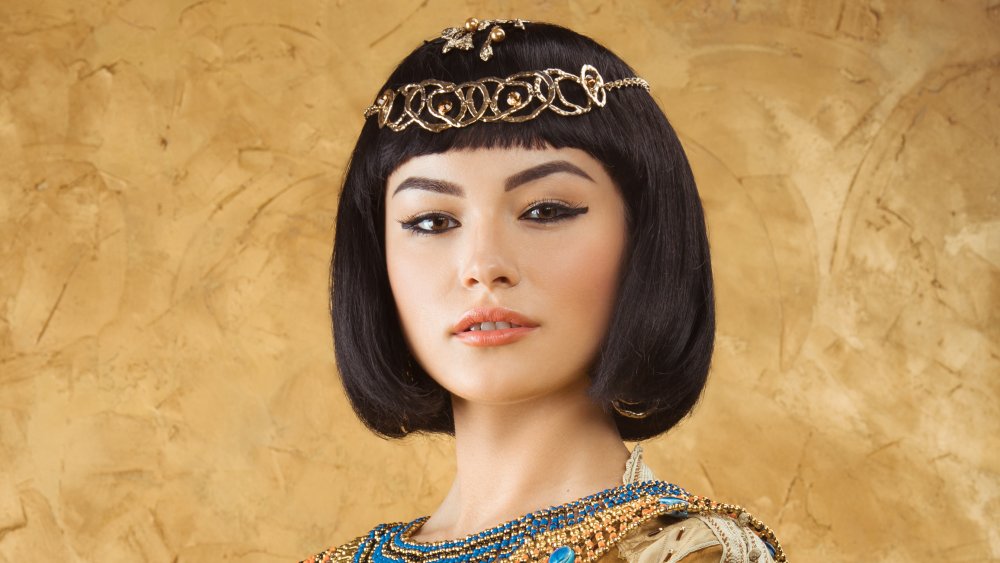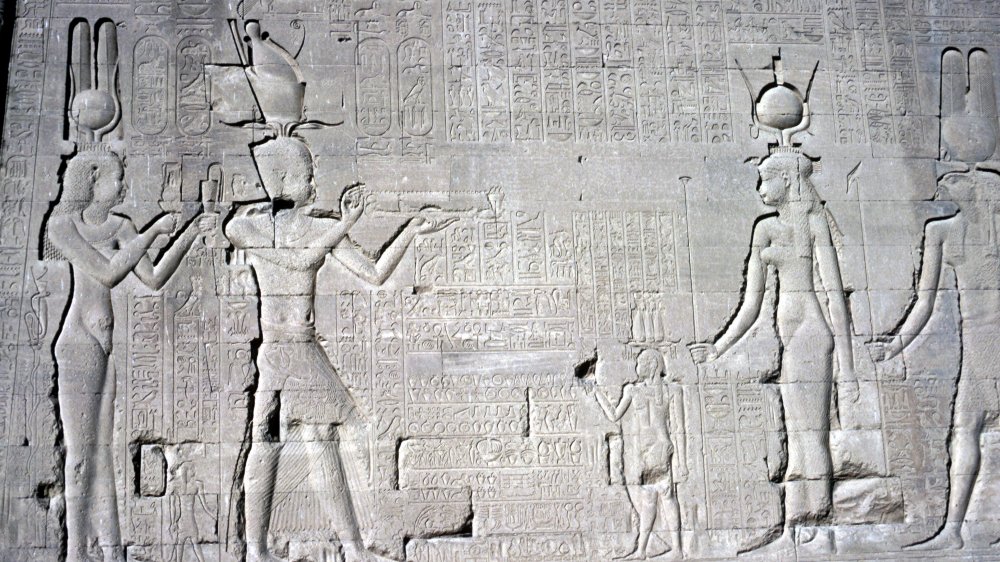Here's Why The Romans Erected A Gold Statue Of Cleopatra
Her exalted place in the court of pop history might be enough to warrant a statue without a second thought today, but when the ancient Romans saw Egyptian queen Cleopatra VII immortalized in gilded bronze in the Temple of Venus Genetrix, they were puzzled as to what Julius Caesar's side piece was doing next to the mother of Aeneas, who was the mythical founder of Rome, as Encyclopedia Britannica explains.
In her 2006 biography Cleopatra: The Last Pharaoh, Prudence J. Jones noted that while the Roman public was well aware of Caesar's several infidelities to his wife Calpurnia, whom he married in 49 BC, they did not approve when he invited Cleopatra to Rome in 46 BC. Caesar didn't seem to mind the gossip about town, so he put her up in a house he owned across the Tiber River from his own.
Unsurprisingly, as Antony Kamm pointed out in his biography of the Roman womanizer (2006's Julius Caesar: A Life), Calpurnia's views on the whole affair "are not recorded."
But there was more to the statue than a lover's whim
More than his new girl from across the pond, Cleopatra was also a powerful ally to Caesar. As Jones points out, the statue was a political move to legitimize her rule over Egypt and her alliance with Rome: "Cleopatra was declared a friend and ally of the Roman people and Egypt was protected from annexation." The choice to associate Cleopatra with Venus was not only an enamored emperor's nod to his lover's beauty, it served that political purpose as well. Just as Caesar claimed to trace his lineage back Rome's mythical founder, Cleopatra similarly linked herself to the Egyptian goddess Isis, whom the Romans associated with Venus.
Funnily enough, this shrewd power move may have been the source of our contemporary notion that Cleopatra was a kohl-eyed smoke show. Her image on coins and a mural from that era make Bob Bianchi of the American Research Center in Egypt (ARCE) doubt her legendary beauty. "The comparison [to Venus] implies Cleopatra VII must have resembled the classical goddesses of love," he writes on the ARCE website. "But unlike the image portrayed most noticeably by actress Elizabeth Taylor ..., I envision Cleopatra VII as a wiry, small-boned woman."
Surprised? So were we. And her possible beak nose was just one of a number of weird things we didn't know about Cleopatra, like the truth about her drinking club with her next Roman boy toy, Mark Antony.

